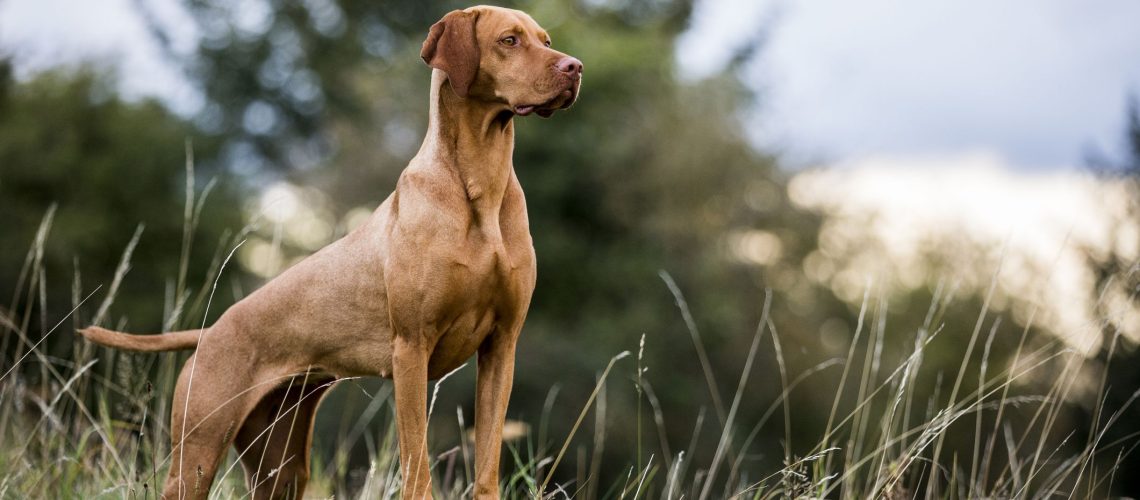Key Takeaways:
- Choose a dog breed that is physically fit and has the stamina for hiking and climbing.
- Consider the size of the dog, as smaller breeds may be more agile on difficult terrains.
- Look for dogs with good obedience and recall skills to ensure their safety during outdoor activities.
- Prioritize breeds with a thick coat or ability to adapt to different weather conditions for year-round adventures.
- Ensure your chosen dog breed is friendly and sociable towards other people and animals you may encounter on the trails.
Are you an outdoor enthusiast looking for a furry companion to join you on your hiking and climbing adventures? Look no further! In this article, we will explore the 15 best dogs for hiking and climbing. By understanding which dog breeds are best suited for these activities, you can ensure a safe and enjoyable experience for both you and your four-legged friend. Whether you're scaling mountains or exploring rugged trails, having the right dog by your side can make all the difference. So let's dive in and discover the perfect hiking and climbing partner for you!
Best Dog Breeds for Hiking and Climbing
Labrador Retriever
The Labrador Retriever is one of the best dog breeds for hiking and climbing adventures. They are known for their friendly and outgoing nature, making them great companions on outdoor trips. Labs are also highly energetic and have a strong desire to please their owners, which makes them easy to train for outdoor activities.
With their webbed feet and water-resistant coat, Labs are excellent swimmers and can handle various terrains. They have a lot of stamina and can go long distances without getting tired, making them ideal partners for long hikes or climbs. Their intelligence and adaptability also allow them to navigate challenging trails with ease.
Australian Shepherd
The Australian Shepherd is another fantastic breed for hiking and climbing adventures. Despite their name, they were actually developed in the United States as working dogs on ranches. Aussies are incredibly agile and excel at outdoor activities that require agility, such as climbing or scrambling over rocks.
Aussies are known for their high energy levels and love for physical exercise. They require regular mental stimulation to prevent boredom, so taking them on hikes or climbs is an excellent way to keep them engaged. Their natural herding instincts also make them great at following commands on the trail.
The Importance of Choosing the Right Dog Breed for Outdoor Activities
Choosing the right dog breed for outdoor activities like hiking and climbing is crucial because not all dogs are suited for these adventures. Some breeds may lack the physical endurance or temperament needed to handle strenuous hikes or challenging climbs.
If you choose a breed that is not well-suited for outdoor activities, it could lead to discomfort or even injury for both you and your dog. For example, brachycephalic breeds with short noses, like Bulldogs or Pugs, may struggle with breathing in high altitudes or hot weather. On the other hand, some breeds may have too much energy and become overly excited on the trail, making it difficult to control them.
By selecting a breed that is known for its athleticism, endurance, and adaptability, you can ensure a safer and more enjoyable experience for both you and your furry companion. It's essential to research different breeds and consider their specific traits before embarking on outdoor adventures together.
How Dogs Can Help Humans During Hiking and Climbing Adventures
Dogs are not only great companions during hiking and climbing adventures but can also be incredibly helpful in various ways. Their keen senses and natural instincts make them valuable assets in outdoor environments.
Navigation Assistance
Dogs have an excellent sense of smell and hearing, which can help navigate trails or locate lost items. They can often detect wildlife or potential dangers before humans do, providing an extra layer of safety during outdoor activities.
Motivation and Emotional Support
Dogs provide emotional support during challenging hikes or climbs. Their presence can boost morale and motivation when faced with difficult terrains or fatigue. Additionally, dogs are non-judgmental listeners who offer comfort when needed most.
Carrying Light Loads
Certain dog breeds, such as Bernese Mountain Dogs or Alaskan Malamutes, have the strength to carry small packs containing essential supplies like water bottles or snacks. This can lighten the load for hikers or climbers and ensure they have necessary items readily accessible.
Overall, dogs bring joy, companionship, and practical assistance to hiking and climbing adventures. Their unique abilities make them valuable partners on outdoor journeys.
Traits that Make Certain Dog Breeds Great for Outdoor Activities
Energy and Stamina
Certain dog breeds are naturally energetic and have high stamina levels, making them perfect companions for outdoor activities. These dogs thrive on physical exercise and enjoy long walks, hikes, or climbing adventures. Breeds like Border Collies, Australian Shepherds, and Siberian Huskies are known for their boundless energy and endurance. They have a strong desire to explore their surroundings and will keep up with you during your outdoor adventures.
Strong Sense of Smell
Another trait that makes certain dog breeds great for outdoor activities is their strong sense of smell. Dogs like Bloodhounds, Beagles, and Basset Hounds have an exceptional ability to track scents, which can be useful during hiking or climbing trips. Their keen noses can help detect wildlife or navigate through unfamiliar terrain. This trait not only adds an extra layer of safety but also enhances the overall experience by allowing you to witness your dog's natural instincts in action.
Examples:
- Border Collie: Known for their intelligence and agility, Border Collies excel in various outdoor activities such as frisbee catching or agility courses.
- Australian Shepherd: With their herding background, Australian Shepherds have the energy and drive to accompany you on long hikes or camping trips.
- Siberian Husky: Originally bred as sled dogs, Siberian Huskies possess incredible endurance and thrive in colder climates.
Training and Preparation Steps Before Taking Your Dog on a Hiking or Climbing Trip
Before embarking on a hiking or climbing trip with your furry friend, it is crucial to ensure they are well-trained and prepared for the adventure ahead. Here are some essential steps to take:
Obedience Training
Proper obedience training is essential for any outdoor adventure with your dog. Teaching basic commands such as "sit," "stay," and "come" will help you maintain control in potentially dangerous situations. It is also important to train your dog to walk on a leash without pulling, as this will make the hiking or climbing experience more enjoyable for both of you.
Physical Conditioning
Just like humans, dogs need physical conditioning before engaging in strenuous activities. Gradually increase their exercise levels and ensure they are fit enough to handle the demands of hiking or climbing. Regular walks, runs, and play sessions will help build their strength and endurance.
Tips:
- Start training your dog at an early age to establish good behavior patterns.
- Use positive reinforcement techniques such as treats and praise to reward desired behaviors.
- Consult with a veterinarian to ensure your dog is in good health and physically capable of participating in outdoor activities.
Popular Hiking and Climbing Destinations Where Dogs Are Allowed
If you're planning an outdoor adventure with your canine companion, it's important to choose destinations that allow dogs. Here are some popular hiking and climbing spots where dogs are welcome:
National Parks
Many national parks have designated trails where dogs are allowed on leashes. Some popular options include Yosemite National Park, Acadia National Park, and Rocky Mountain National Park. These parks offer breathtaking scenery and a variety of trails suitable for different skill levels.
State Parks
State parks often have pet-friendly trails that allow dogs on leashes. Examples include Redwood State Park in California, Great Smoky Mountains State Park in Tennessee, and Mount Greylock State Reservation in Massachusetts. These parks offer opportunities for both hiking and climbing adventures.
Note:
Before visiting any park or destination, check their specific rules regarding pets. Some areas may have restrictions or require permits for dogs, so it's important to be well-informed before planning your trip.
Safety Precautions and Equipment for Bringing Your Dog on Outdoor Adventures
Ensuring the safety of your dog during outdoor adventures is paramount. Here are some precautions to take and essential equipment to bring:
Proper Identification
Make sure your dog wears a collar with identification tags containing your contact information. In case they get lost during the hike or climb, this will increase the chances of a safe return. Additionally, consider microchipping your dog as an extra layer of identification.
Leash and Harness
Always keep your dog on a leash to maintain control and prevent them from wandering off or encountering wildlife. A sturdy harness can provide additional support and distribute weight evenly, especially during challenging climbs or steep terrains.
Essential Equipment:
- Water and collapsible bowl: Keep your dog hydrated throughout the adventure.
- First aid kit: Include items such as bandages, antiseptic wipes, and tweezers for any minor injuries.
- Dog backpack: If your dog is physically capable, a backpack can help distribute their own supplies like food and water.
- Paw protection: Consider using booties or paw balm to protect your dog's paws from rough terrain or extreme temperatures.
Remember that each dog is unique, so adjust the safety precautions and equipment based on their specific needs and abilities. Prioritize their comfort and well-being throughout the entire outdoor adventure.
In conclusion, if you're looking for a dog to accompany you on your hiking and climbing adventures, consider breeds like the Labrador Retriever, Australian Shepherd, or Border Collie. These dogs are known for their energy, endurance, and ability to navigate challenging terrains, making them great companions for outdoor activities.
Which dog is better at keeping the trail?
Australian Shepherds are highly active and flexible dogs that have the ability to navigate even the most challenging paths. Their lively temperament ensures they stay content throughout their journey.
Is a 10 mile hike too much for a dog?
Based on Pawsitively Intrepid's information, a medium-sized, healthy dog should be capable of comfortably completing a 5-10 mile hike. With proper training and conditioning, they may be able to handle 20 miles or more in a day. Exceptionally fit and enthusiastic dogs can even tackle 25 to 30 miles without much difficulty.
Can a dog hike 20 miles a day?
Every dog has their own unique capabilities and limitations that will determine what they can do. Fit adult dogs may have the ability to hike up to 20 miles per day, but this is only possible if they have been trained and conditioned appropriately, and if the terrain and weather conditions are favorable.
How much weight can a dog carry hiking?
By considering your dog's weight, you can determine the amount of weight they can carry. Typically, your dog's backpack should not exceed 25% of their body weight.
What is the most dog you can walk?
It is advised that dog walkers should not walk more than four dogs simultaneously. All dogs under the care of a dog walker should be obedient and controlled at all times, and they should be transported according to the guidelines provided in this document. Dog walkers must make sure they have a leash for each dog.
How old should a dog be to hike?
Engaging in repetitive activities on tough surfaces such as running on asphalt can have a negative impact on growth plates. These plates, which stay open and soft until around 12 months of age in most dogs and up to 18 months in larger breeds, should be given a break from intense physical activity until this age.

















